Md Osman Gani
Learning What Matters: Causal Time Series Modeling for Arctic Sea Ice Prediction
Sep 11, 2025Abstract:Conventional machine learning and deep learning models typically rely on correlation-based learning, which often fails to distinguish genuine causal relationships from spurious associations, limiting their robustness, interpretability, and ability to generalize. To overcome these limitations, we introduce a causality-aware deep learning framework that integrates Multivariate Granger Causality (MVGC) and PCMCI+ for causal feature selection within a hybrid neural architecture. Leveraging 43 years (1979-2021) of Arctic Sea Ice Extent (SIE) data and associated ocean-atmospheric variables at daily and monthly resolutions, the proposed method identifies causally influential predictors, prioritizes direct causes of SIE dynamics, reduces unnecessary features, and enhances computational efficiency. Experimental results show that incorporating causal inputs leads to improved prediction accuracy and interpretability across varying lead times. While demonstrated on Arctic SIE forecasting, the framework is broadly applicable to other dynamic, high-dimensional domains, offering a scalable approach that advances both the theoretical foundations and practical performance of causality-informed predictive modeling.
LLM-based Corroborating and Refuting Evidence Retrieval for Scientific Claim Verification
Mar 11, 2025Abstract:In this paper, we introduce CIBER (Claim Investigation Based on Evidence Retrieval), an extension of the Retrieval-Augmented Generation (RAG) framework designed to identify corroborating and refuting documents as evidence for scientific claim verification. CIBER addresses the inherent uncertainty in Large Language Models (LLMs) by evaluating response consistency across diverse interrogation probes. By focusing on the behavioral analysis of LLMs without requiring access to their internal information, CIBER is applicable to both white-box and black-box models. Furthermore, CIBER operates in an unsupervised manner, enabling easy generalization across various scientific domains. Comprehensive evaluations conducted using LLMs with varying levels of linguistic proficiency reveal CIBER's superior performance compared to conventional RAG approaches. These findings not only highlight the effectiveness of CIBER but also provide valuable insights for future advancements in LLM-based scientific claim verification.
Correlation to Causation: A Causal Deep Learning Framework for Arctic Sea Ice Prediction
Mar 03, 2025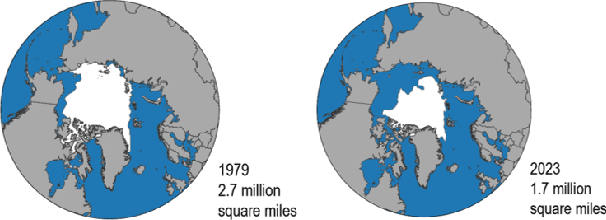
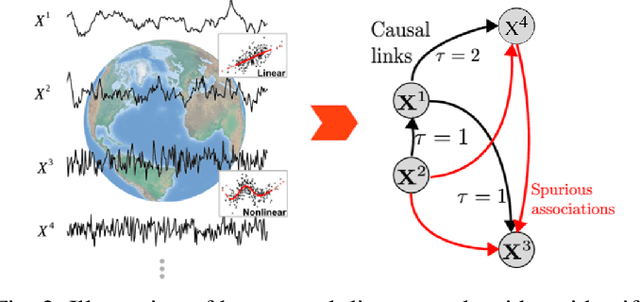

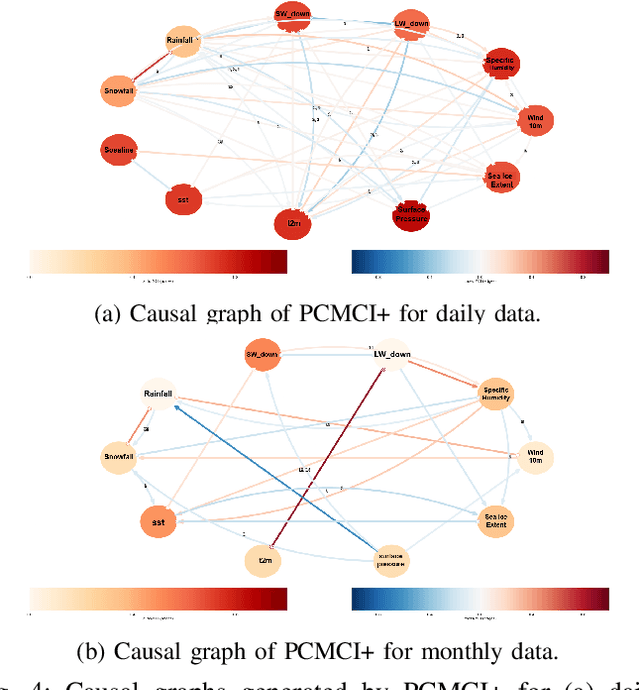
Abstract:Traditional machine learning and deep learning techniques rely on correlation-based learning, often failing to distinguish spurious associations from true causal relationships, which limits robustness, interpretability, and generalizability. To address these challenges, we propose a causality-driven deep learning framework that integrates Multivariate Granger Causality (MVGC) and PCMCI+ causal discovery algorithms with a hybrid deep learning architecture. Using 43 years (1979-2021) of daily and monthly Arctic Sea Ice Extent (SIE) and ocean-atmospheric datasets, our approach identifies causally significant factors, prioritizes features with direct influence, reduces feature overhead, and improves computational efficiency. Experiments demonstrate that integrating causal features enhances the deep learning model's predictive accuracy and interpretability across multiple lead times. Beyond SIE prediction, the proposed framework offers a scalable solution for dynamic, high-dimensional systems, advancing both theoretical understanding and practical applications in predictive modeling.
Time Series Classification of Supraglacial Lakes Evolution over Greenland Ice Sheet
Oct 08, 2024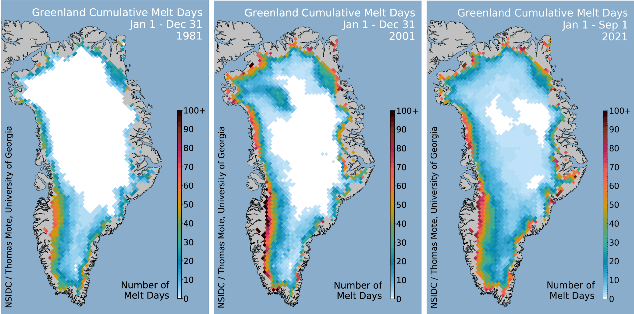
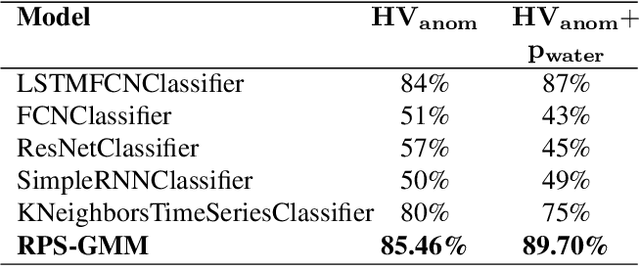
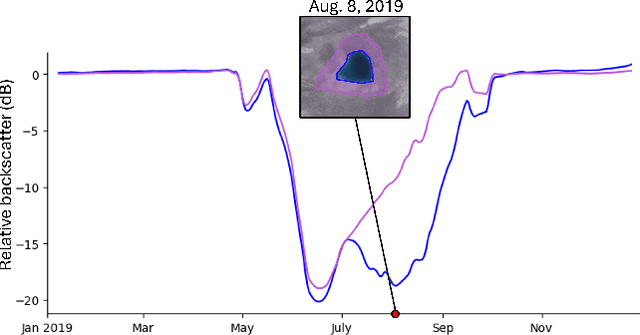

Abstract:The Greenland Ice Sheet (GrIS) has emerged as a significant contributor to global sea level rise, primarily due to increased meltwater runoff. Supraglacial lakes, which form on the ice sheet surface during the summer months, can impact ice sheet dynamics and mass loss; thus, better understanding these lakes' seasonal evolution and dynamics is an important task. This study presents a computationally efficient time series classification approach that uses Gaussian Mixture Models (GMMs) of the Reconstructed Phase Spaces (RPSs) to identify supraglacial lakes based on their seasonal evolution: 1) those that refreeze at the end of the melt season, 2) those that drain during the melt season, and 3) those that become buried, remaining liquid insulated a few meters beneath the surface. Our approach uses time series data from the Sentinel-1 and Sentinel-2 satellites, which utilize microwave and visible radiation, respectively. Evaluated on a GrIS-wide dataset, the RPS-GMM model, trained on a single representative sample per class, achieves 85.46% accuracy with Sentinel-1 data alone and 89.70% with combined Sentinel-1 and Sentinel-2 data. This performance significantly surpasses existing machine learning and deep learning models which require a large training data. The results demonstrate the robustness of the RPS-GMM model in capturing the complex temporal dynamics of supraglacial lakes with minimal training data.
Causality for Earth Science -- A Review on Time-series and Spatiotemporal Causality Methods
Apr 03, 2024Abstract:This survey paper covers the breadth and depth of time-series and spatiotemporal causality methods, and their applications in Earth Science. More specifically, the paper presents an overview of causal discovery and causal inference, explains the underlying causal assumptions, and enlists evaluation techniques and key terminologies of the domain area. The paper elicits the various state-of-the-art methods introduced for time-series and spatiotemporal causal analysis along with their strengths and limitations. The paper further describes the existing applications of several methods for answering specific Earth Science questions such as extreme weather events, sea level rise, teleconnections etc. This survey paper can serve as a primer for Data Science researchers interested in data-driven causal study as we share a list of resources, such as Earth Science datasets (synthetic, simulated and observational data) and open source tools for causal analysis. It will equally benefit the Earth Science community interested in taking an AI-driven approach to study the causality of different dynamic and thermodynamic processes as we present the open challenges and opportunities in performing causality-based Earth Science study.
KGS: Causal Discovery Using Knowledge-guided Greedy Equivalence Search
Apr 11, 2023



Abstract:Learning causal relationships solely from observational data provides insufficient information about the underlying causal mechanism and the search space of possible causal graphs. As a result, often the search space can grow exponentially for approaches such as Greedy Equivalence Search (GES) that uses a score-based approach to search the space of equivalence classes of graphs. Prior causal information such as the presence or absence of a causal edge can be leveraged to guide the discovery process towards a more restricted and accurate search space. In this study, we present KGS, a knowledge-guided greedy score-based causal discovery approach that uses observational data and structural priors (causal edges) as constraints to learn the causal graph. KGS is a novel application of knowledge constraints that can leverage any of the following prior edge information between any two variables: the presence of a directed edge, the absence of an edge, and the presence of an undirected edge. We extensively evaluate KGS across multiple settings in both synthetic and benchmark real-world datasets. Our experimental results demonstrate that structural priors of any type and amount are helpful and guide the search process towards an improved performance and early convergence.
A Survey on Causal Discovery Methods for Temporal and Non-Temporal Data
Apr 05, 2023Abstract:Causal Discovery (CD) is the process of identifying the cause-effect relationships among the variables of a system from data. Over the years, several methods have been developed primarily based on the statistical properties of data to uncover the underlying causal mechanism. In this study, we present an extensive discussion on the methods designed to perform causal discovery from both independent and identically distributed (i.i.d.) data and time series data. For this purpose, we first introduce the common terminologies in causal discovery, and then provide a comprehensive discussion of the algorithms designed to identify the causal edges in different settings. We further discuss some of the benchmark datasets available for evaluating the performance of the causal discovery methods, available tools or software packages to perform causal discovery readily, and the common metrics used to evaluate these methods. We also test some common causal discovery algorithms on different benchmark datasets, and compare their performances. Finally, we conclude by presenting the common challenges involved in causal discovery, and also, discuss the applications of causal discovery in multiple areas of interest.
eCDANs: Efficient Temporal Causal Discovery from Autocorrelated and Non-stationary Data (Student Abstract)
Mar 06, 2023
Abstract:Conventional temporal causal discovery (CD) methods suffer from high dimensionality, fail to identify lagged causal relationships, and often ignore dynamics in relations. In this study, we present a novel constraint-based CD approach for autocorrelated and non-stationary time series data (eCDANs) capable of detecting lagged and contemporaneous causal relationships along with temporal changes. eCDANs addresses high dimensionality by optimizing the conditioning sets while conducting conditional independence (CI) tests and identifies the changes in causal relations by introducing a surrogate variable to represent time dependency. Experiments on synthetic and real-world data show that eCDANs can identify time influence and outperform the baselines.
RFC-Net: Learning High Resolution Global Features for Medical Image Segmentation on a Computational Budget
Feb 13, 2023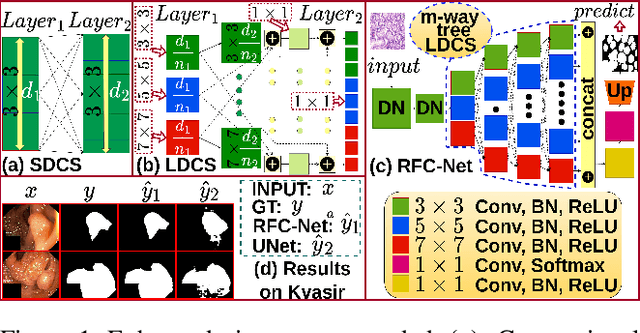

Abstract:Learning High-Resolution representations is essential for semantic segmentation. Convolutional neural network (CNN)architectures with downstream and upstream propagation flow are popular for segmentation in medical diagnosis. However, due to performing spatial downsampling and upsampling in multiple stages, information loss is inexorable. On the contrary, connecting layers densely on high spatial resolution is computationally expensive. In this work, we devise a Loose Dense Connection Strategy to connect neurons in subsequent layers with reduced parameters. On top of that, using a m-way Tree structure for feature propagation we propose Receptive Field Chain Network (RFC-Net) that learns high resolution global features on a compressed computational space. Our experiments demonstrates that RFC-Net achieves state-of-the-art performance on Kvasir and CVC-ClinicDB benchmarks for Polyp segmentation.
CDANs: Temporal Causal Discovery from Autocorrelated and Non-Stationary Time Series Data
Feb 07, 2023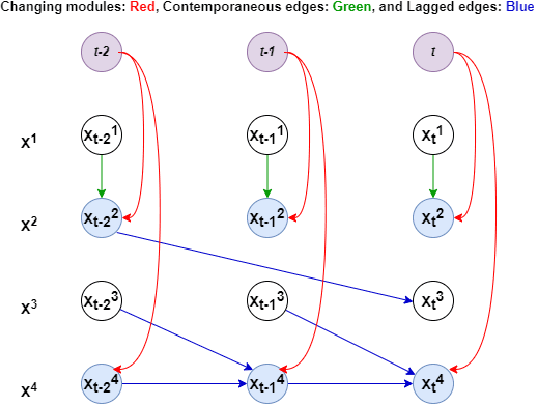
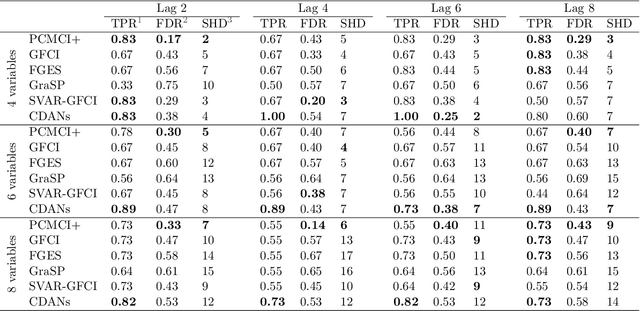


Abstract:This study presents a novel constraint-based causal discovery approach for autocorrelated and non-stationary time series data (CDANs). Our proposed method addresses several limitations of existing causal discovery methods for autocorrelated and non-stationary time series data, such as high dimensionality, the inability to identify lagged causal relationships, and the overlook of changing modules. Our approach identifies both lagged and instantaneous/contemporaneous causal relationships along with changing modules that vary over time. The method optimizes the conditioning sets in a constraint-based search by considering lagged parents instead of conditioning on the entire past that addresses high dimensionality. The changing modules are detected by considering both contemporaneous and lagged parents. The approach first detects the lagged adjacencies, then identifies the changing modules and contemporaneous adjacencies, and finally determines the causal direction. We extensively evaluated the proposed method using synthetic datasets and a real-world clinical dataset and compared its performance with several baseline approaches. The results demonstrate the effectiveness of the proposed method in detecting causal relationships and changing modules in autocorrelated and non-stationary time series data.
 Add to Chrome
Add to Chrome Add to Firefox
Add to Firefox Add to Edge
Add to Edge